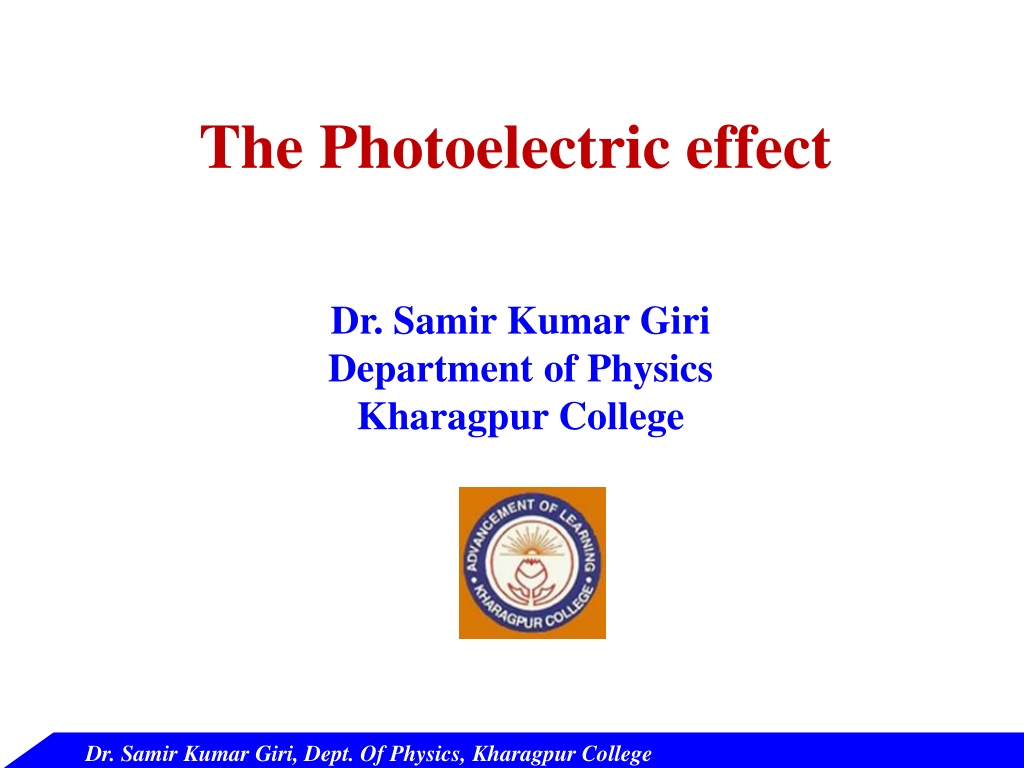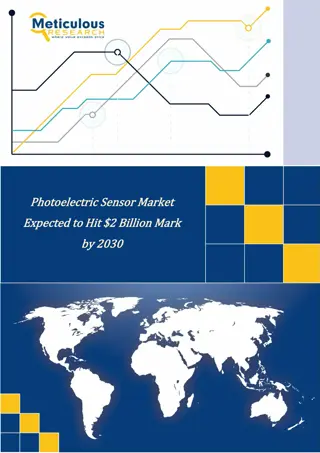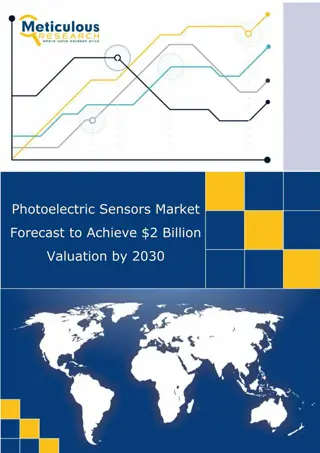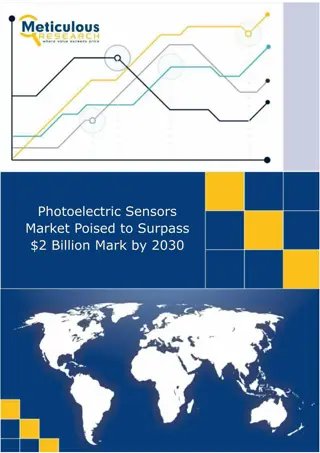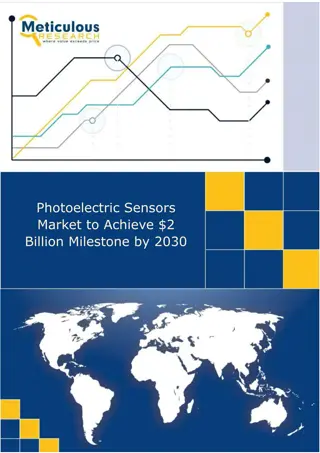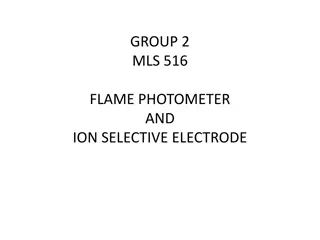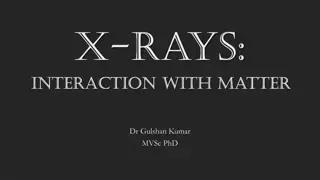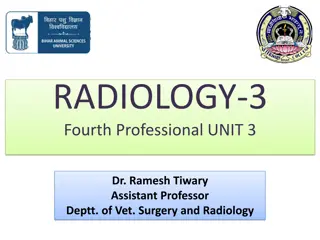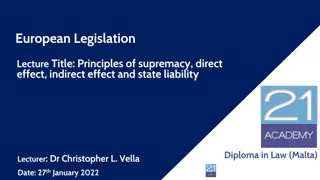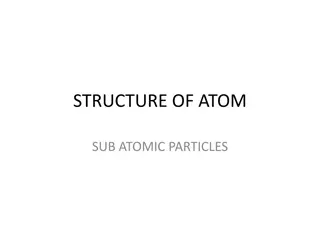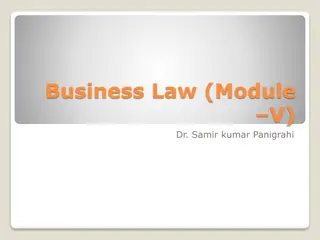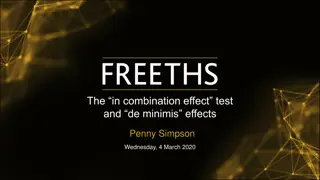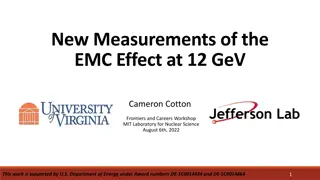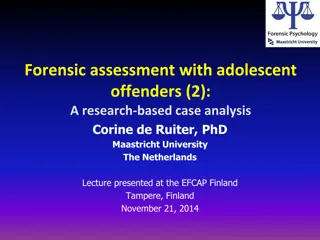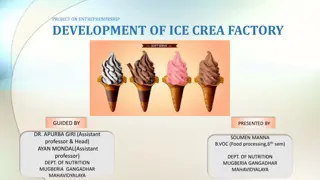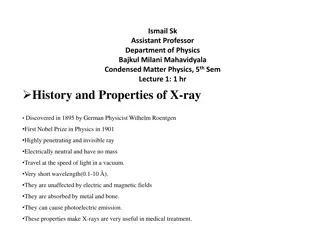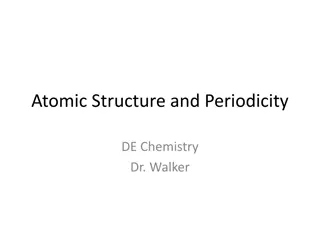Understanding the Photoelectric Effect: Dr. Samir Kumar Giri's Research
The photoelectric effect, first observed by Heinrich Hertz in 1887, involves the ejection of electrons from a metal plate when light shines on it. Dr. Samir Kumar Giri from Kharagpur College delves into this phenomenon, exploring how the kinetic energy of photoelectrons depends on light frequency rather than intensity. Experimental setups and observations reveal intriguing aspects such as instantaneous electron emission and the independence of kinetic energy on light intensity. The concept of stopping potential and its relationship to the photoelectric current further deepen our understanding of this crucial scientific principle.
Download Presentation

Please find below an Image/Link to download the presentation.
The content on the website is provided AS IS for your information and personal use only. It may not be sold, licensed, or shared on other websites without obtaining consent from the author. Download presentation by click this link. If you encounter any issues during the download, it is possible that the publisher has removed the file from their server.
E N D
Presentation Transcript
The Photoelectric effect Dr. Samir Kumar Giri Department of Physics Kharagpur College Dr. Samir Kumar Giri, Dept. Of Physics, Kharagpur College
The Photoelectric effect Introduction: First observed by Heinrich Hertz in 1887 light shining on a metal plate causes electrons to be knocked loose (ejected) from the metal plate. Several aspects of the phenomena could not be explained in terms of an electromagnetic Wave. Increasing the brightness of the light did not eject faster electrons think of light as a wave brighter light (bigger amplitude wave) should eject more energetic (faster) electrons. Energy and number of ejected electrons depends on light(frequency) for some metals, red light would not eject any electrons at all even it very high blue lights ejects very fast electrons even if very dim. The electrons were emitted immediately no time lag if light is dim, expect a delay while the waves wiggle the electrons and break them loose. Dr. Samir Kumar Giri, Dept. Of Physics, Kharagpur College
Typical Experimental Setup When light strikes E, photoelectrons are emitted Electrons collected at C and passing through the ammeter are a current in the circuit C is maintained at a positive potential by the power supply Observations of Photo electric effect The kinetic energy of the photoelectrons is independent of the light intensity. The kinetic energy of the photoelectrons, for a given emitting material, depends only on the frequency of the light. When photoelectrons are produced, their number (not their kinetic energy) is proportional to the intensity of light. Also, the photoelectrons are emitted almost instantly following illumination of the photocathode, independent of the intensity of the light. Dr. Samir Kumar Giri, Dept. Of Physics, Kharagpur College
Photocurrent Photoelectric Current/Voltage High Intensity The current increases with intensity, but reaches a saturation level for large V s No current flows for voltages less than or equal to Vs, the stopping potential The stopping potential is independent of the radiation intensity Low Intensity Potential Difference Cutoff Wavelength The cutoff wavelength is related to the work function c=hc/w Wavelengths greater than c incident on a material with a work function w don t result in the emission of photoelectrons A specific value of V can be found at which the ammeter reading just drops to zero. This is called the stopping potential (Vstop). When the potential is at Vstop the most energetic electrons were turned back just before hitting the collector. This indicates that the maximum kinetic energy of the photoelectrons, Kmax= e Vstop where e is the elementary charge. interestingly, it was found that Kmax does not depend upon the intensity of the incident light. It is difficult to explain this observation with classical Dr. Samir Kumar Giri, Dept. Of Physics, Kharagpur College
When the maximum kinetic energy is plotted as a function of frequency a graph like that on the right results. Note that there is no photoelectric effect if the light is below a certain cutoff frequency, 0. This occurs no matter how bright the incident light is. Emax 0 Photoelectric effect graphs for three different metals: The work function of each metal can be determined by taking the negative y intercept of each line. The cutoff frequency of each metal can be determined by taking the x intercept of each line Note that two lines have the same slope. This slope is Planck s constant Metal 2 Emax Metal 1 frequency Dr. Samir Kumar Giri, Dept. Of Physics, Kharagpur College
Physics/Wave Theory Not Explained the Features No electrons are emitted if the incident light frequency is below some cutoff frequency that is characteristic of the material being illuminated The maximum kinetic energy of the photoelectrons is independent of the light intensity The maximum kinetic energy of the photoelectrons increases with increasing light frequency Electrons are emitted from the surface almost instantaneously, even at low intensities Explanation of Classical Problems The effect is not observed below a certain cutoff frequency since the photon energy must be greater than or equal to the work function Without this, electrons are not emitted, regardless of the intensity of the light The maximum KE depends only on the frequency and the work function, not on the intensity The maximum KE increases with increasing frequency The effect is instantaneous since there is a one-to-one interaction between the photon and the electron Dr. Samir Kumar Giri, Dept. Of Physics, Kharagpur College
Quantum Theory of The Atom In 1901, Max Planck suggested light was made up of packets of energy: E=nh E = Energy of Radiation, v = Frequency n (Quantum Number) = 1,2,3 .n, h = Planck s Constant * Atoms, therefore, emit only certain quantities of energy and the energy of an atom is described as being quantized *Thus, an atom changes its energy state by emitting (or absorbing) one or more quanta Photons Quantum theory describes light as a particle called a photon with wave According to quantum theory, a photon has an energy given by E = h = hc/ The energy of the light is proportional to the frequency, and inversely proportional to the wavelength! The higher the frequency (lower wavelength) the higher the energy of the photon! 10 photons have an energy equal to ten times a single photon. The quantum theory describes experiments to astonishing precision, whereas the classical wave description cannot Representation of Photon Dr. Samir Kumar Giri, Dept. Of Physics, Kharagpur College
Einstein's equation for photoelectric effect Kinetic ejected electron energy of Einstein proposed an explanation for the photoelectric effect which would play a large role in his receiving the Nobel Prize in Physics in 1921. Rather than the classical model of light as a continuous wave, Einstein viewed light as discrete packets of energy called photons. hf , 2hf ,3hf nhf Taking advantage of Planck s discovery of the quantization of energy, Einstein determined that each photon had energy E=hf. The energy transferred to an electron by light was no longer considered to depend on intensity, but on frequency Energy remove electron from metal needed to mv2 h w Energy supplied w by photon h Dr. Samir Kumar Giri, Dept. Of Physics, Kharagpur College
Einsteins Explanation The electrons are bound to the material by attractive forces. Hence, work must be done to free an electron: Work Function depends on the materials h = KEmax+w Minimum work required to free electron Incident Photon energy Maximum Kinetic energy of dislodged electron Energy from the light beam is transferred to the electrons in the solid by photons which have an energy related to the frequency of the beam. The photon s energy would be E = h Each photon can give all its energy to an electron in the metal The electron is considered to be in a well of height frequency which is called the work function of the metal Because of energy conservation the maximum kinetic energy of the liberated photoelectron is KEmax = h - w Dr. Samir Kumar Giri, Dept. Of Physics, Kharagpur College
Work Function Work function is the minimum amount of energy that has to be given to an electron to release it from the surface of the material and varies depending on the material Threshold Frequency h 0= w hc/ 0= w, c = speed of light, o = wavelength Dr. Samir Kumar Giri, Dept. Of Physics, Kharagpur College
